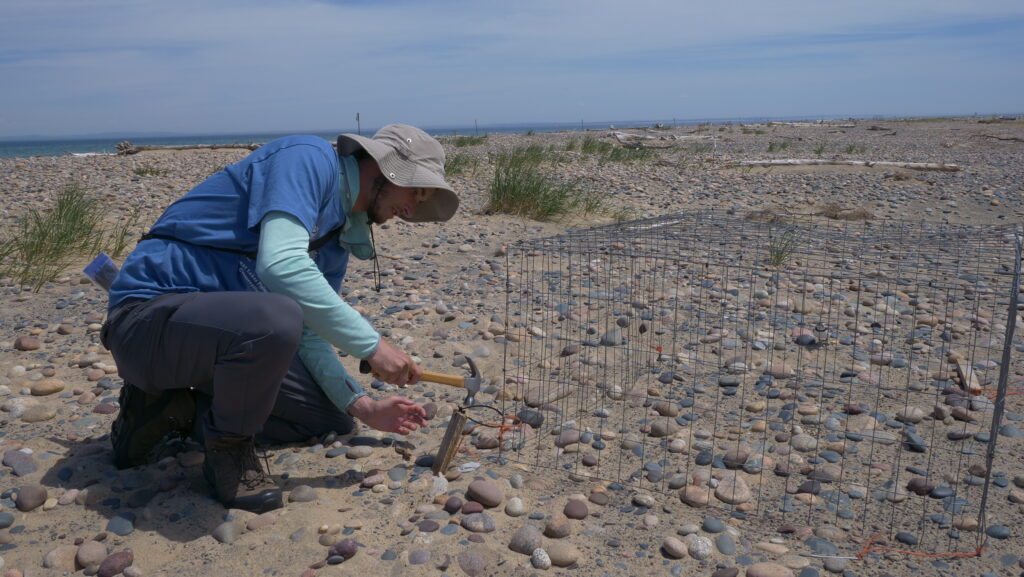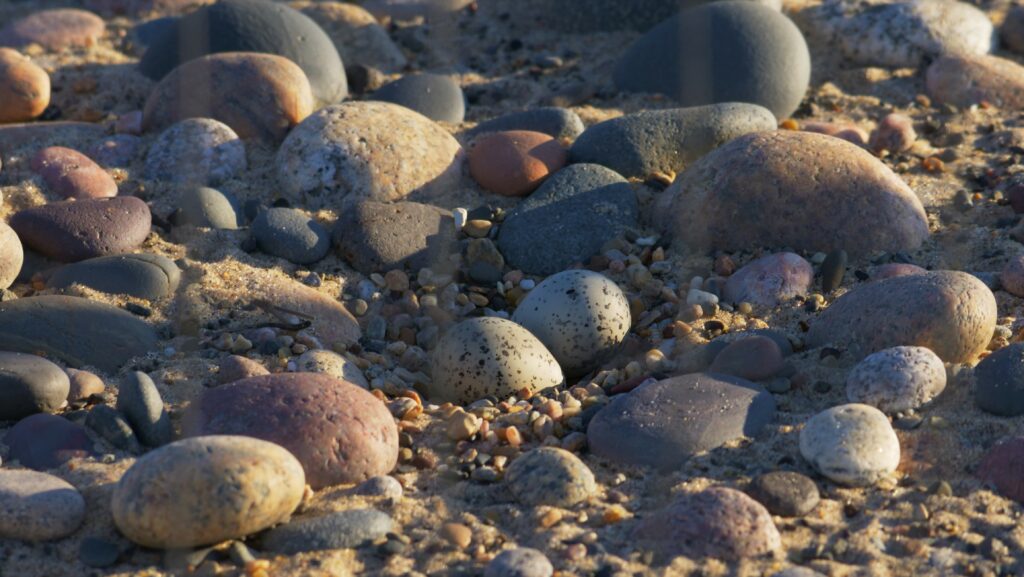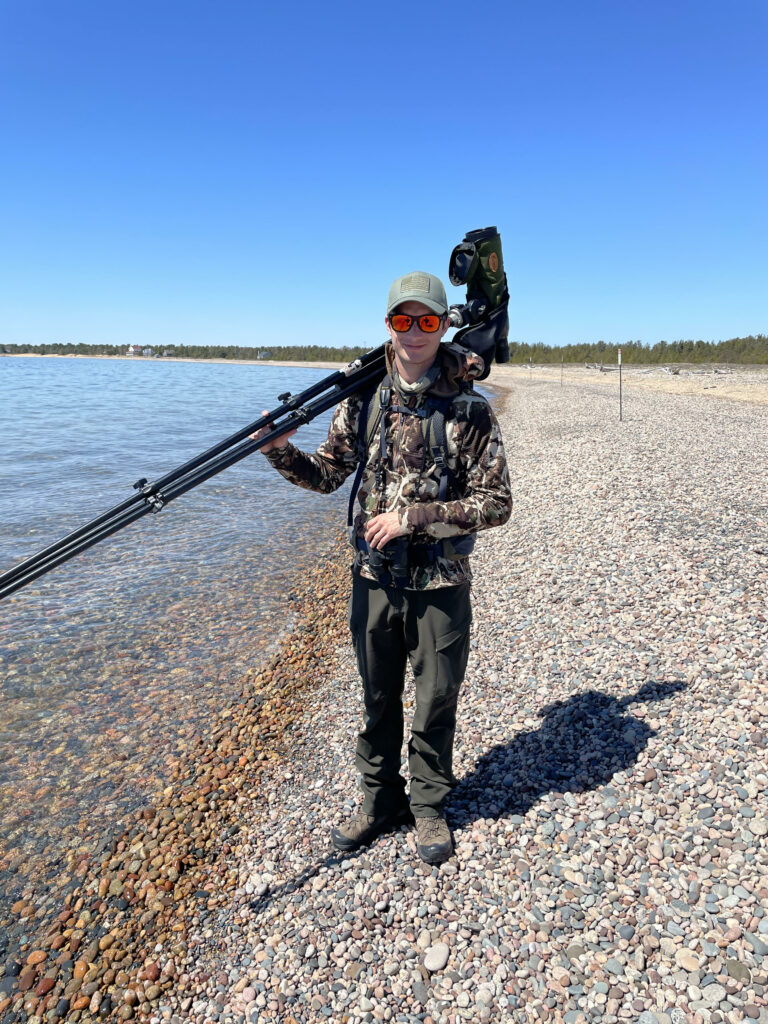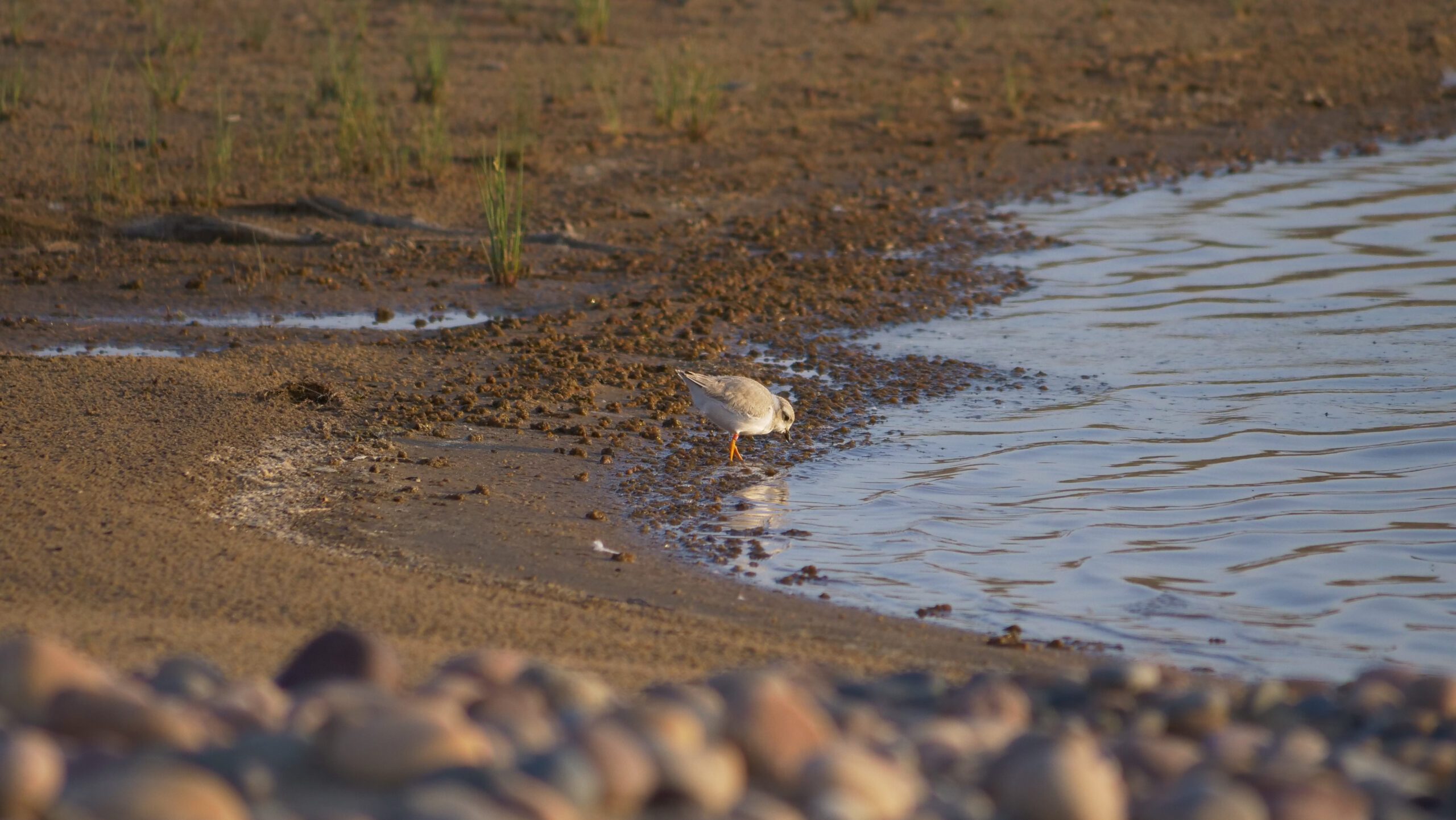The summer of 2021 was another successful year for Piping Plovers at Whitefish Point. For only the third time, there were multiple Piping Plover nests at the Point, with three present this season. Plover breeding activity began in mid-May with a male observed scraping and displaying for two different females, one being his eventual mate. The male was hatched at Vermillion Point in 2019, and the female was unbanded. This pair began copulating in late May, and their nest was discovered on May 28 with two eggs. Egg-laying ended on June 2 with four eggs being laid. This pair split incubation duties very evenly, switching every hour or two. A total of three eggs hatched on June 28, and within 24 hours, all three chicks left the exclosure. After 23 days, Piping Plover chicks are considered to be fledged. All three chicks made it to their first 23 days and shortly after were seen flying around the beach.
The second pair consisted of a captive-reared male who was released at the Point last summer, and the female was one of the chicks from last year’s nest at Whitefish Point! Their nest was discovered on May 30 with one egg. Egg-laying ended on June 12 with a total of four eggs. Three eggs hatched on July 4. Shortly after hatching, the three chicks moved into the dune grass near the pond edge, where they remained for the majority of their time at the Point. One chick, unfortunately, disappeared on July 20, assumed to have been predated. The last two remaining chicks fledged on July 27.
The third pair consisted of a male hatched at Whitefish Point last summer and a captive-reared female released in the Lower Peninsula last summer. Their nest was discovered with one egg on June 1. Egg-laying ended with four eggs on June 10. All four eggs hatched on July 4 around the same time as the second nest. Unfortunately, on the morning of July 10, it was discovered that the female and all four chicks had disappeared. Although no predator tracks were found on the beach and there were no other signs of any predators, it was likely that all five birds were predated. The male continued to be seen on their territory for another few days, seemingly unbothered by the disappearance of his mate and chicks. Although a significant effort was put into locating them, there were no more sightings of this brood.
Even though I was at Whitefish Point to monitor Piping Plovers, I was still able to gain some other neat bird sightings. The season’s highlight was undoubtedly the Ruff that I found in late May. This record represents the first Point record and the third Upper Peninsula record. Other highlights of the season include the Point’s third Cerulean Warbler and fourth Wilson’s Phalarope, a Mute Swan, a Swainson’s Hawk, a Brewer’s Blackbird, over 1,600 White-winged Crossbills in mid-July, and two Great Egrets in late July. It was also very cool to watch the overlap between spring and fall migrant shorebirds — in late June, there was considerable overlap between late spring and early fall migrants.


Piping Plover Intern Alec Olivier sets up an exclosure for a Piping Plover nest (photo 1). Piping Plover eggs are very well camouflaged (photo 2) and the exclosure can help keep the nest protected from predators and more.
Photos by Blake Carlile
This summer field season was a success, thanks to a number of dedicated individuals. These include the Michigan Audubon headquarters staff, Outreach Intern Blake Carlile, Chris Neri, Nova Mackentley, volunteer Jim Leitch, Greg McClellan, Tony Block, and the Seney Youth Conservation Corps crew (Stephanie Schubel, Cindy Mom, Morgan Waller, and Beth Olson). I very much enjoyed my second season working at Whitefish Point and am often reminded about why this place is my favorite place to bird!
Lastly, I want to remind all visitors who are lucky enough to visit the Point to please obey all signs and closures within Whitefish Point and the Seney National Wildlife Refuge. While the vast majority of visitors respected the rules and regulations of Whitefish Point, it was disappointing to see several photographers and fairly well-known birders enter the closed area. As tempting as it may be to cross over to photograph shorebirds or get a better view of the pond, both can be accomplished while staying along the shoreline. By not entering the closed area, you are helping to protect Piping Plovers and avoiding the potential to receive a trespassing ticket. Entering the closed area is considered trespassing and is treated as such.
~ by Alec Olivier, Piping Plover intern
Featured photo: One of the Piping Plover chicks that fledged at the Point. Photo by Blake Carlile

Alec Olivier grew up in Marquette, Mich., but currently lives in Big Rapids while attending Ferris State University where he plays on the men’s tennis team. He attended his first Spring Fling in 2005 at the age of four and since then he has spent countless hours birding in the Upper Peninsula and at Whitefish Point. He was excited to be back at the Point to monitor this important species.
This article appeared in the 2021 Fall Jack Pine Warbler.

